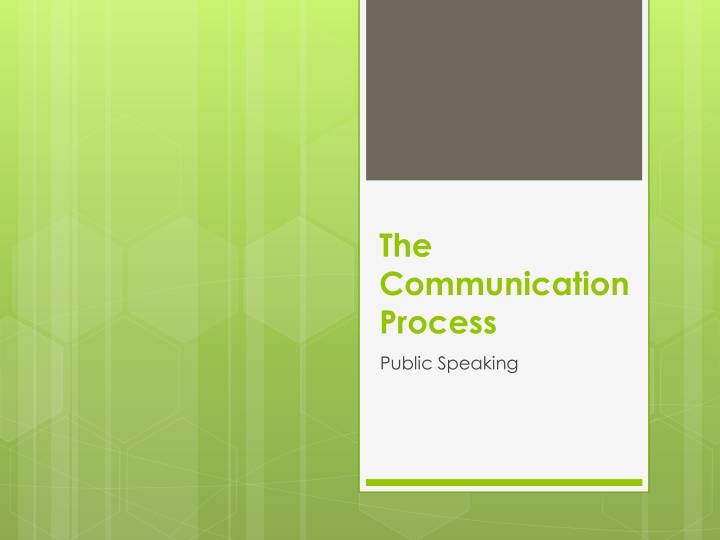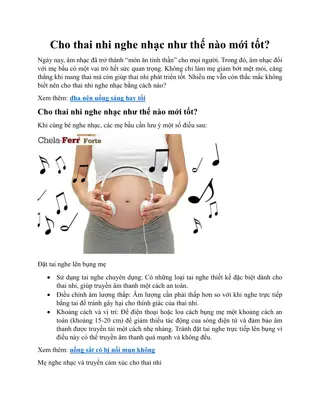
Enhance Your Communication Skills Through Public Speaking Process
Discover the benefits of public speaking including increased interpersonal skills, honesty, integrity, and enhanced communication skills. Understand the communication process involving encoding, decoding, sender, receiver, and noise to improve your speaking abilities.
Download Presentation

Please find below an Image/Link to download the presentation.
The content on the website is provided AS IS for your information and personal use only. It may not be sold, licensed, or shared on other websites without obtaining consent from the author. If you encounter any issues during the download, it is possible that the publisher has removed the file from their server.
You are allowed to download the files provided on this website for personal or commercial use, subject to the condition that they are used lawfully. All files are the property of their respective owners.
The content on the website is provided AS IS for your information and personal use only. It may not be sold, licensed, or shared on other websites without obtaining consent from the author.
E N D
Presentation Transcript
The Communication Process Public Speaking
Benefits to Public Speaking The ability to speak confidently and convincingly IN PUBLIC is an asset to anyone who wants to take an active role in his or her classroom, workplace or community.
Benefits to Public Speaking 3. Increase your Interpersonal Skills (how you relate to others) 2. Honesty/Integrity will strengthen (others will respect you more) 1. Better COMMUNICATION SKILLS (both written and verbal)
Benefits to Public Speaking Whether you are concerned about the environment or lower taxes, public speaking offers a way to communicate your concerns with others.
The Communication Process E n c o d i n g D e c o d i n g Sender (Speaker) Noise Noise E n c o d i n g D e c o d i n g Receiver (Audience) Verbal &/or non verbal Verbal &/or non verbal
The Communication Process SENDER (speaker) The person that creates the message E n c o d i n g Sender (Speaker) The speaker takes ideas and thoughts and turns them into messages sending them to a receiver or audience. Noise D e c o d i n g Receiver (Audience) The speaker decides what messages are to be sent and how they will be sent. Verbal &/or non verbal ENCODING The process of organizing the message, choosing the words and sentence structure and verbalizing the message
The Communication Process THE MESSAGE The content of the communication process thoughts and ideas put into meaningful expressions verbally and non-verbally messages Miscommunication happens when - audience misinterprets the speaker s message - speaker misreads the audience feedback
The Communication Process RECEIVER(Audience) The receiver interprets the message in ways that are unique to that person D e c o d i n g Sender (Speaker) DECODING Process of interpreting the message Noise E n c o d i n g Receiver (Audience) Although the sender/speaker may intend a message to carry a specific meaning, the receiver/audiences interprets the message based on their own experiences and attitudes Verbal &/or non verbal
The Communication Process FEEDBACK The audiences response to the message D e c o d i n g Sender (Speaker) Can be conveyed both verbally & non-verbally Noise E n c o d i n g Receiver (Audience) Verbal &/or non verbal Indicates whether a speakers message has been understood
The Communication Process NON-VERBAL VERBAL Denotative Connotative Slang Jargon Accent Dialect Vocalization Facial Expressions Gestures Mannerisms Posture Body Movement Applause
The Communication Process Feedback is actually a message whereby the receiver now becomes the sender D e c o d i n g E n c o d i n g Sender (Speaker) Noise Noise This role reversal represents the interactive nature of public speaking D e c o d i n g E n c o d i n g Receiver (Audience) Verbal &/or non verbal
The Communication Process THE CHANNEL The Medium through which the speaker sends a message: VERBAL or NON VERBAL D e c o d i n g E n c o d i n g Sender (Speaker) Sight message is seen; ie: text Sound message is heard; ie: Telephone lines Touch written correspondence 1. D e c o d i n g E n c o d i n g 2. Receiver (Audience) Verbal &/or non verbal Verbal &/or non verbal 3. Daily communication is a combination of several.
The Communication Process Physical noise air conditioning, door open-close, fire alarm Psychological noise personal emotions; ie: F on test Semantic noise Emotionally charged words E n c o d i n g D e c o d i n g Sender (Speaker) Noise Noise D e c o d i n g E n c o d i n g Receiver (Audience) NOISE Any interference with the message
Speech #1 Introduction Speech Getting To Know You! Answer the attached questions and present your partner to the rest of the class. You will receive points for this exercise.






















